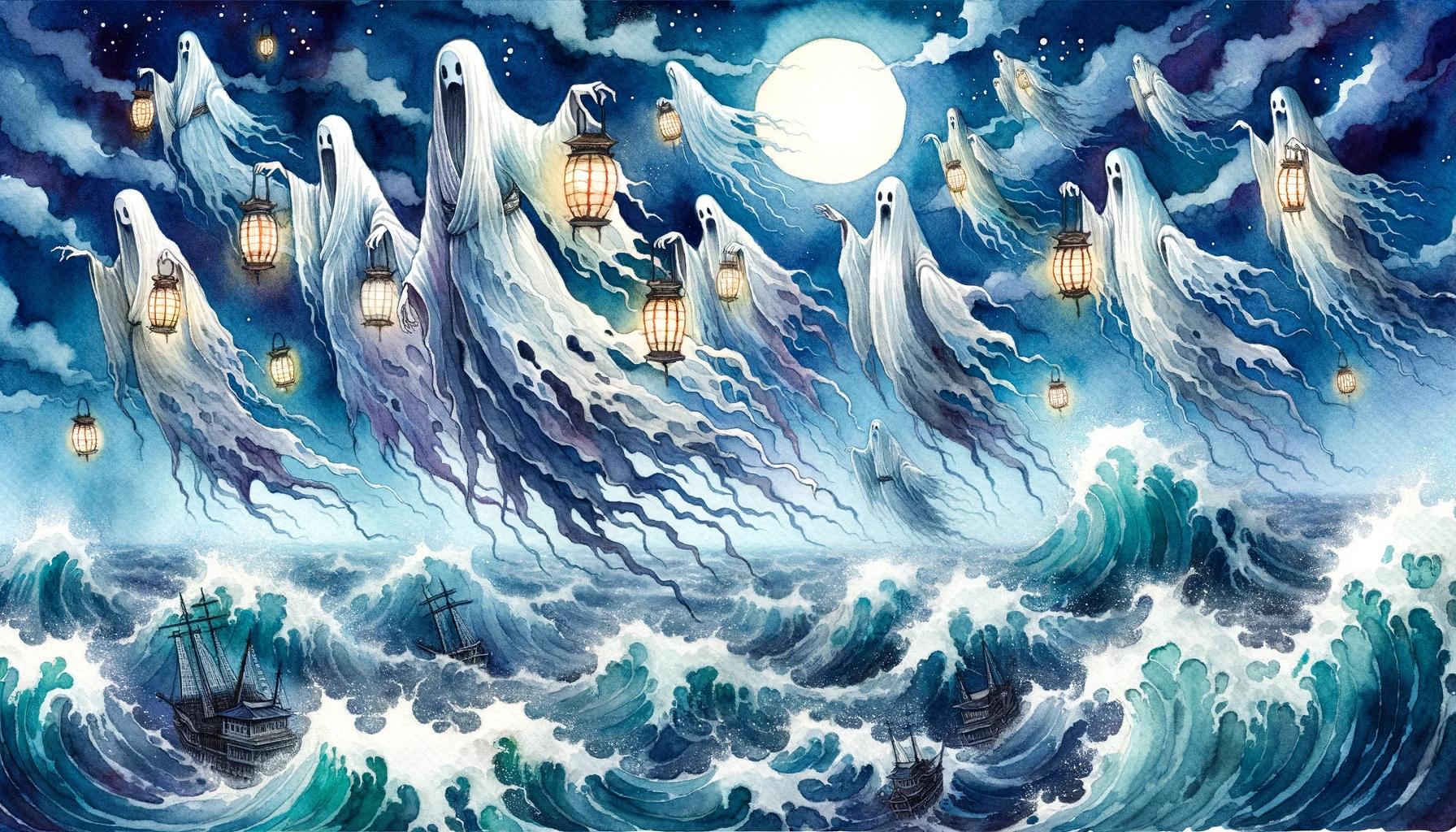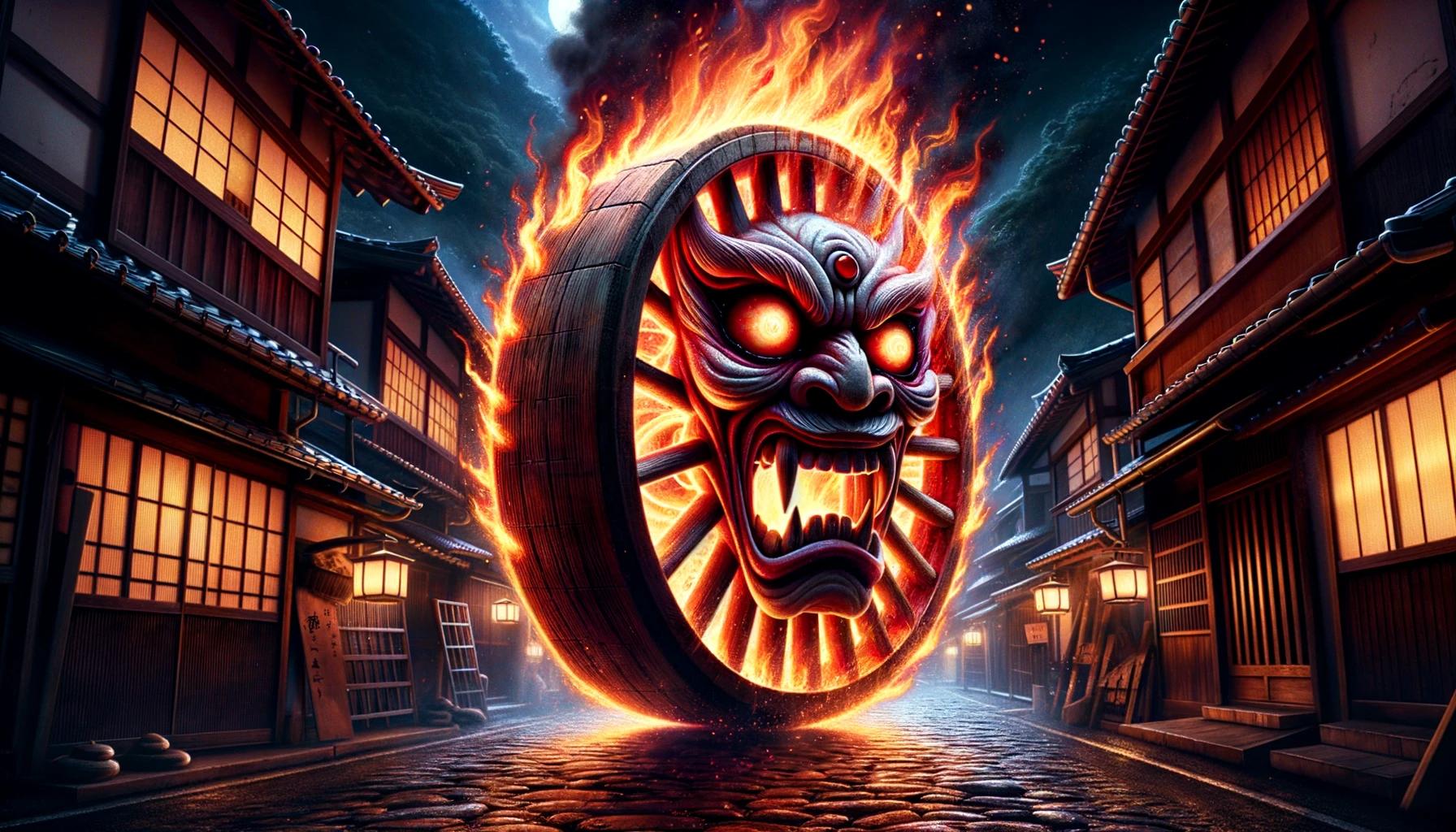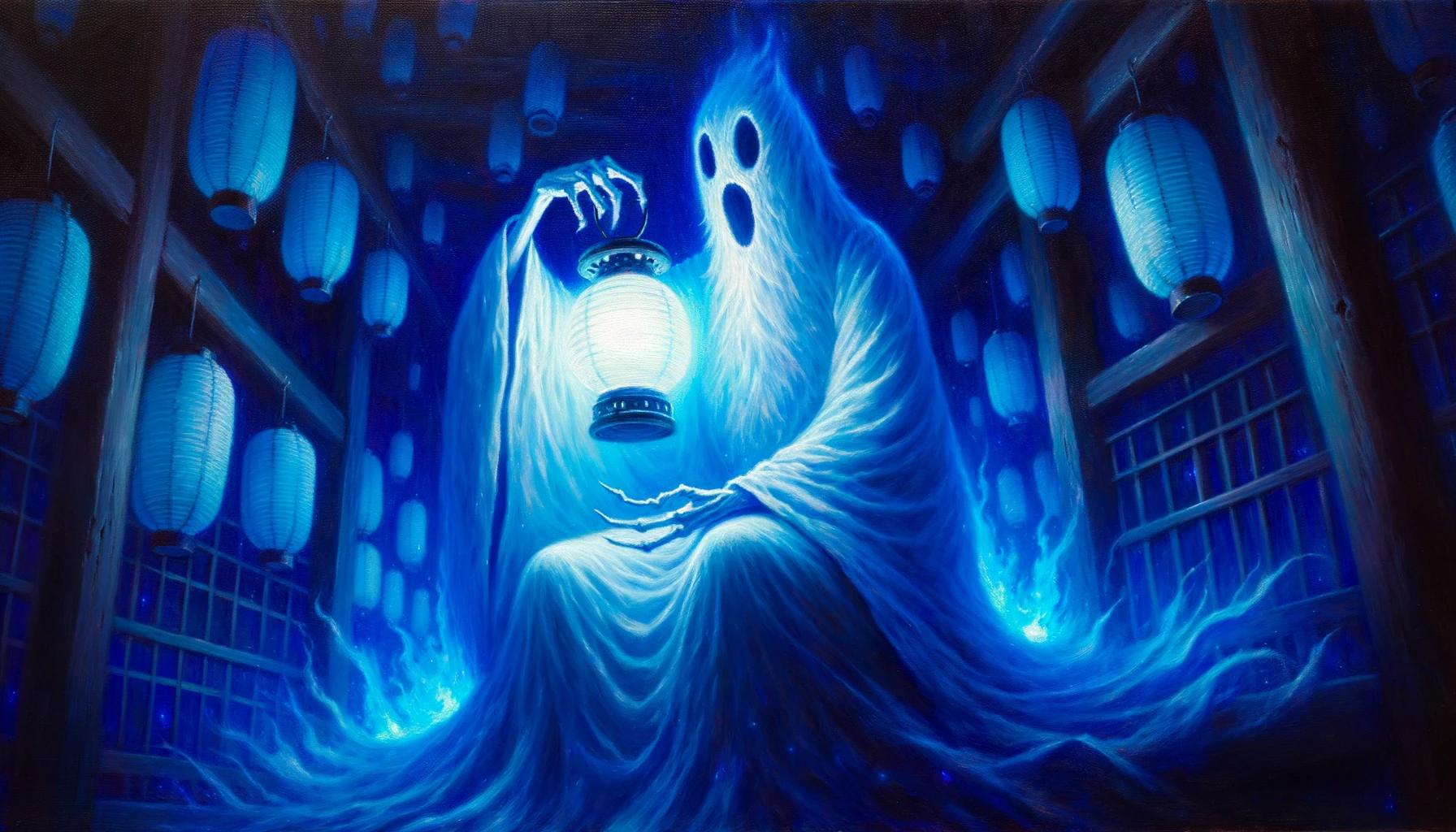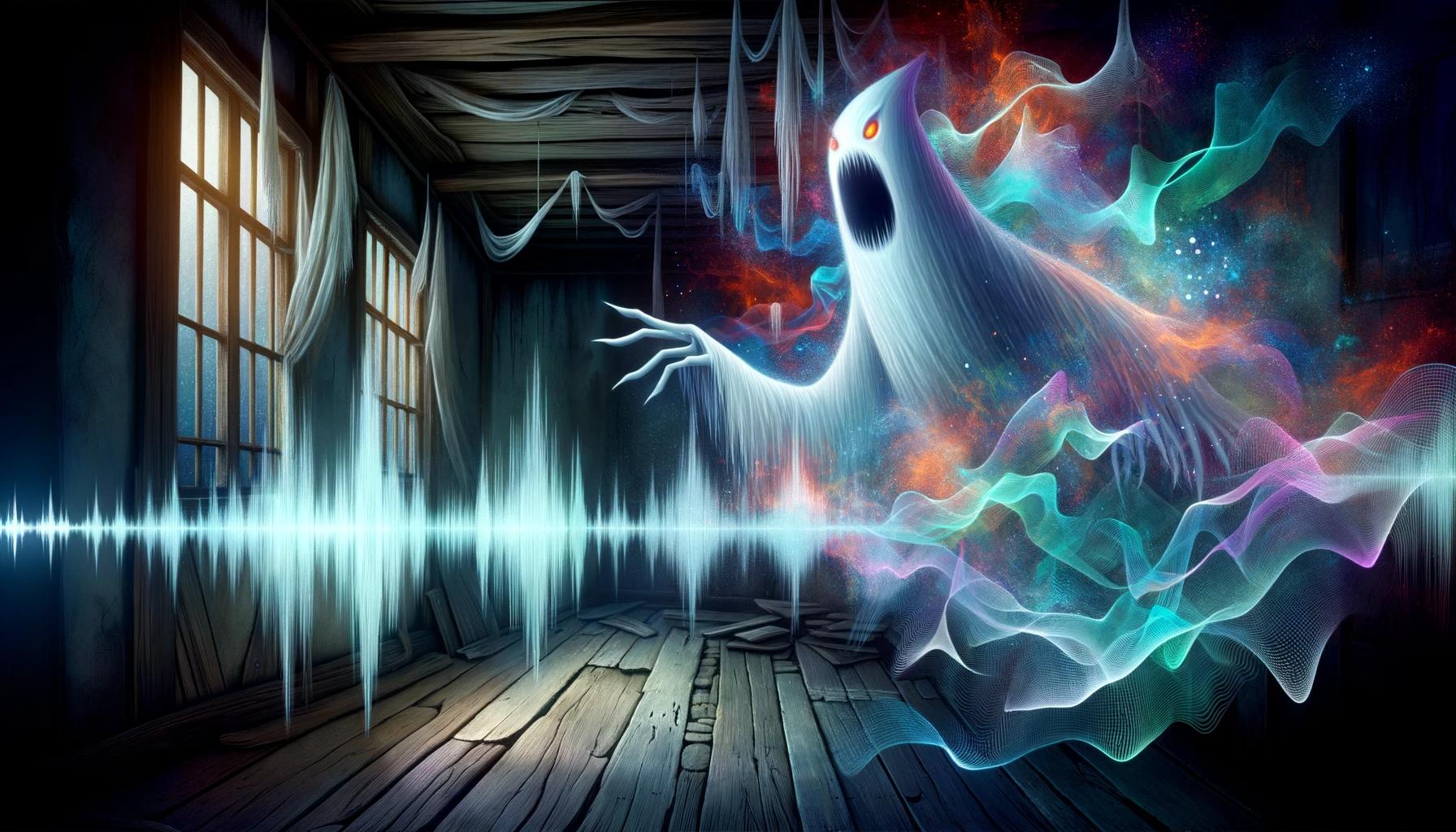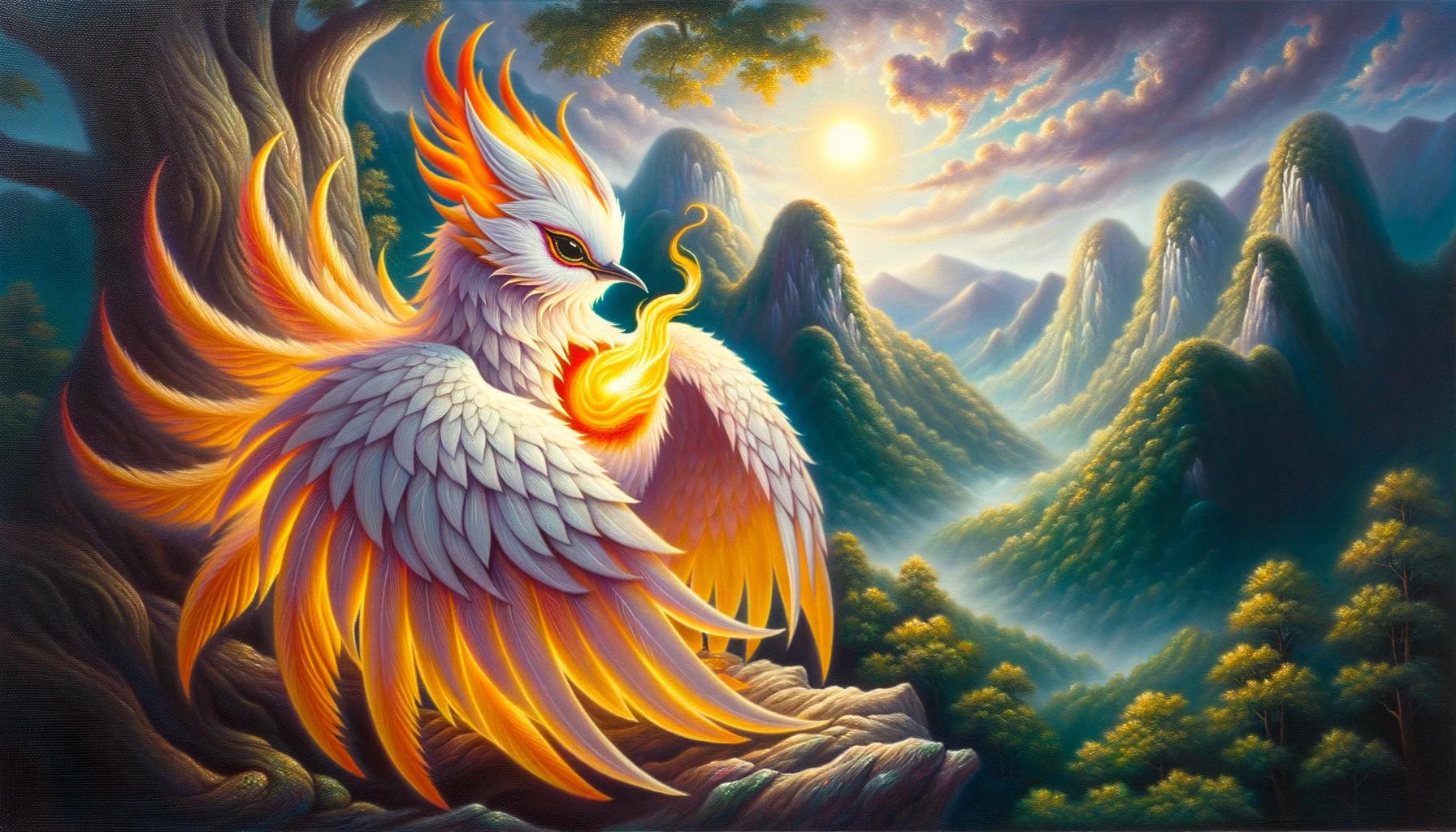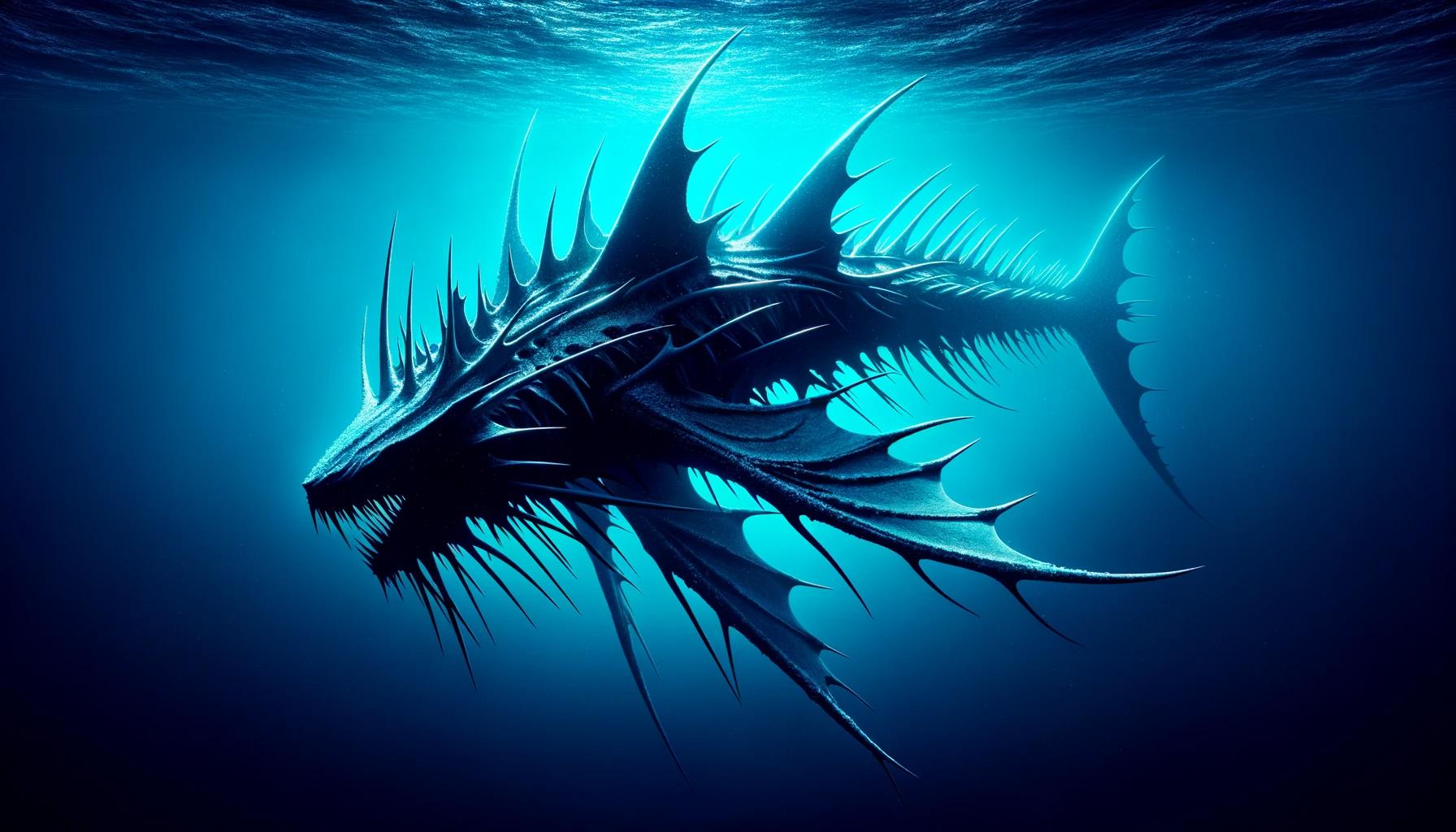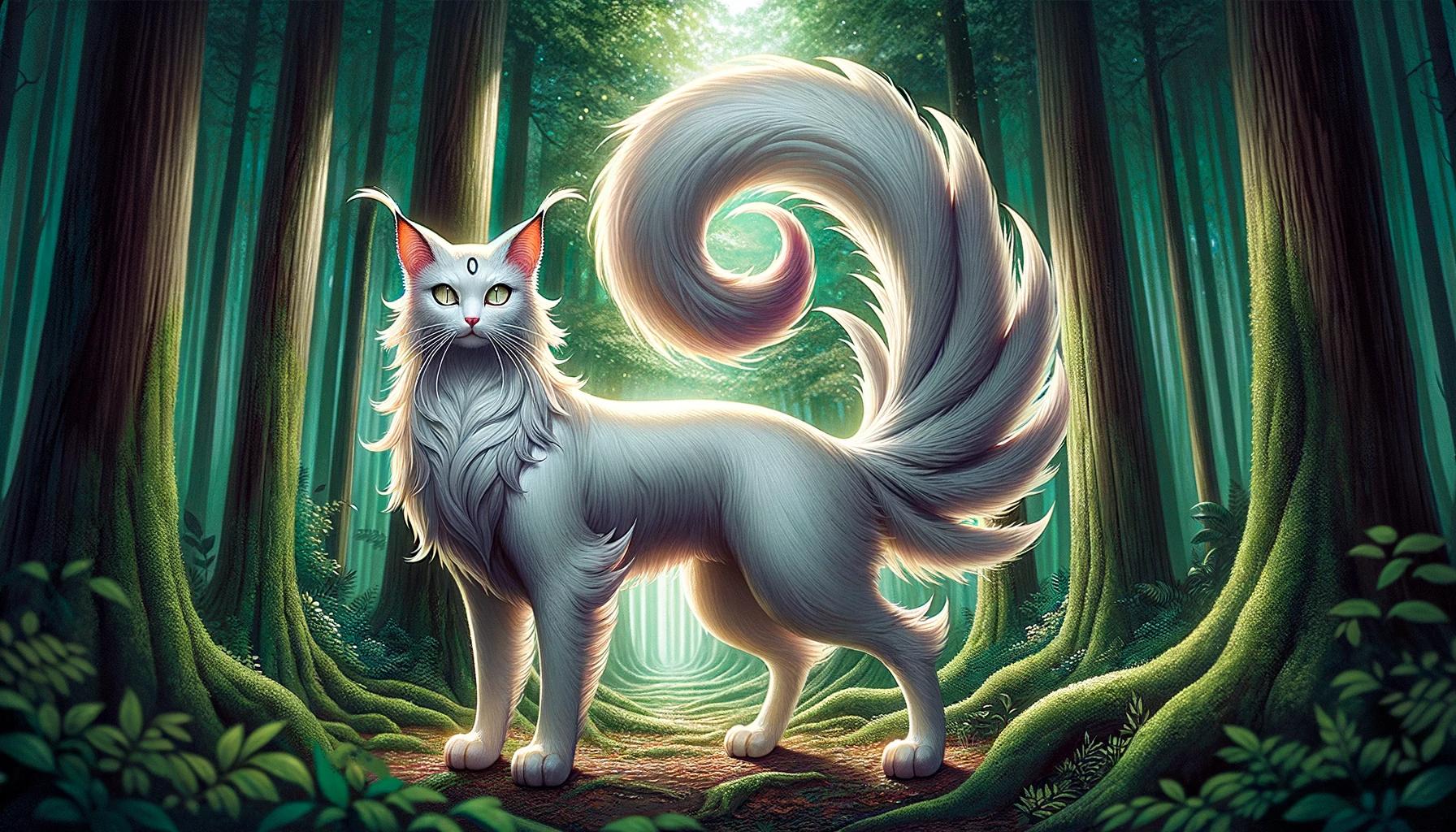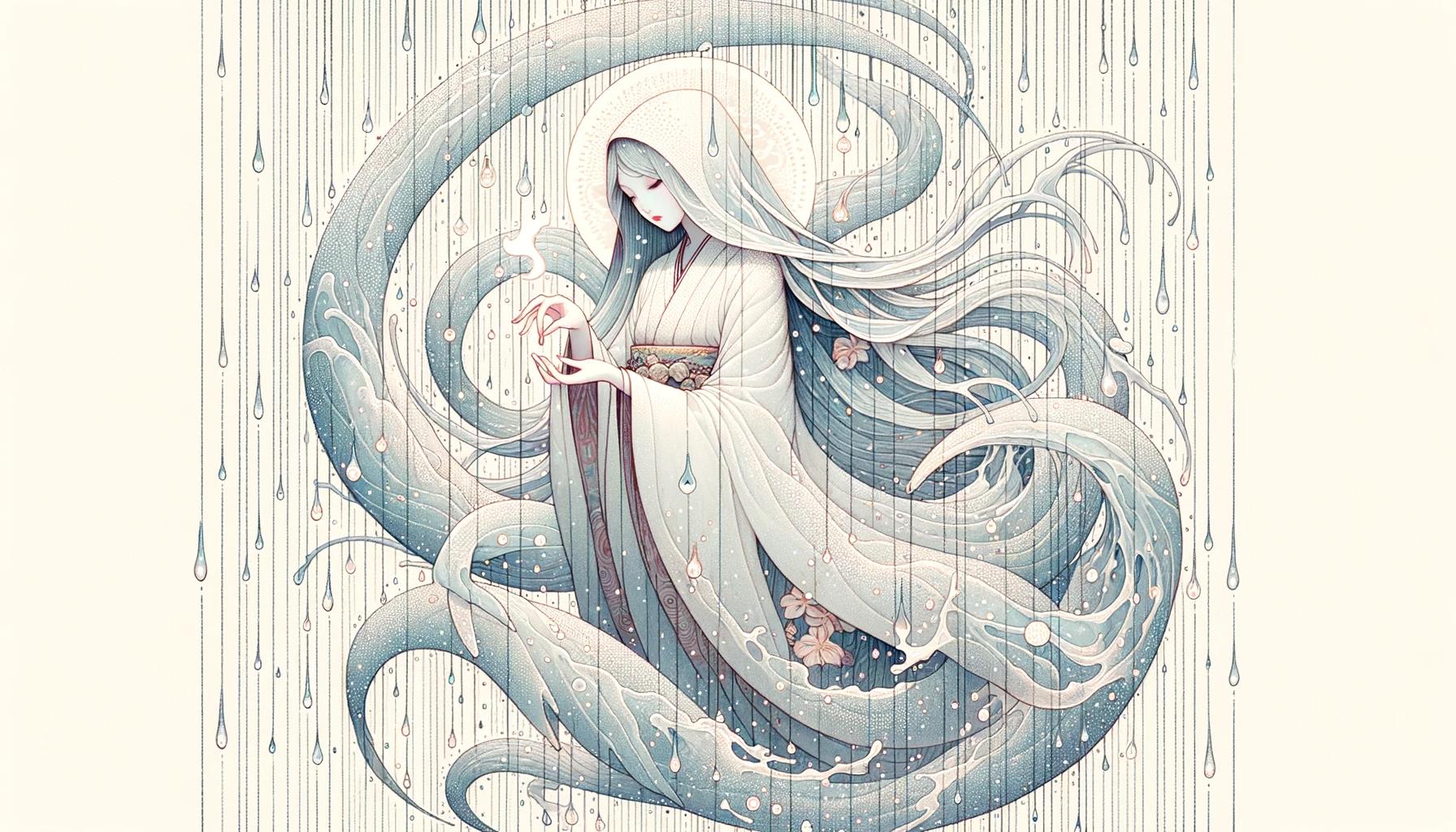Ushioni Yokai: A Terrifying Demon from Japan’s Western Shores
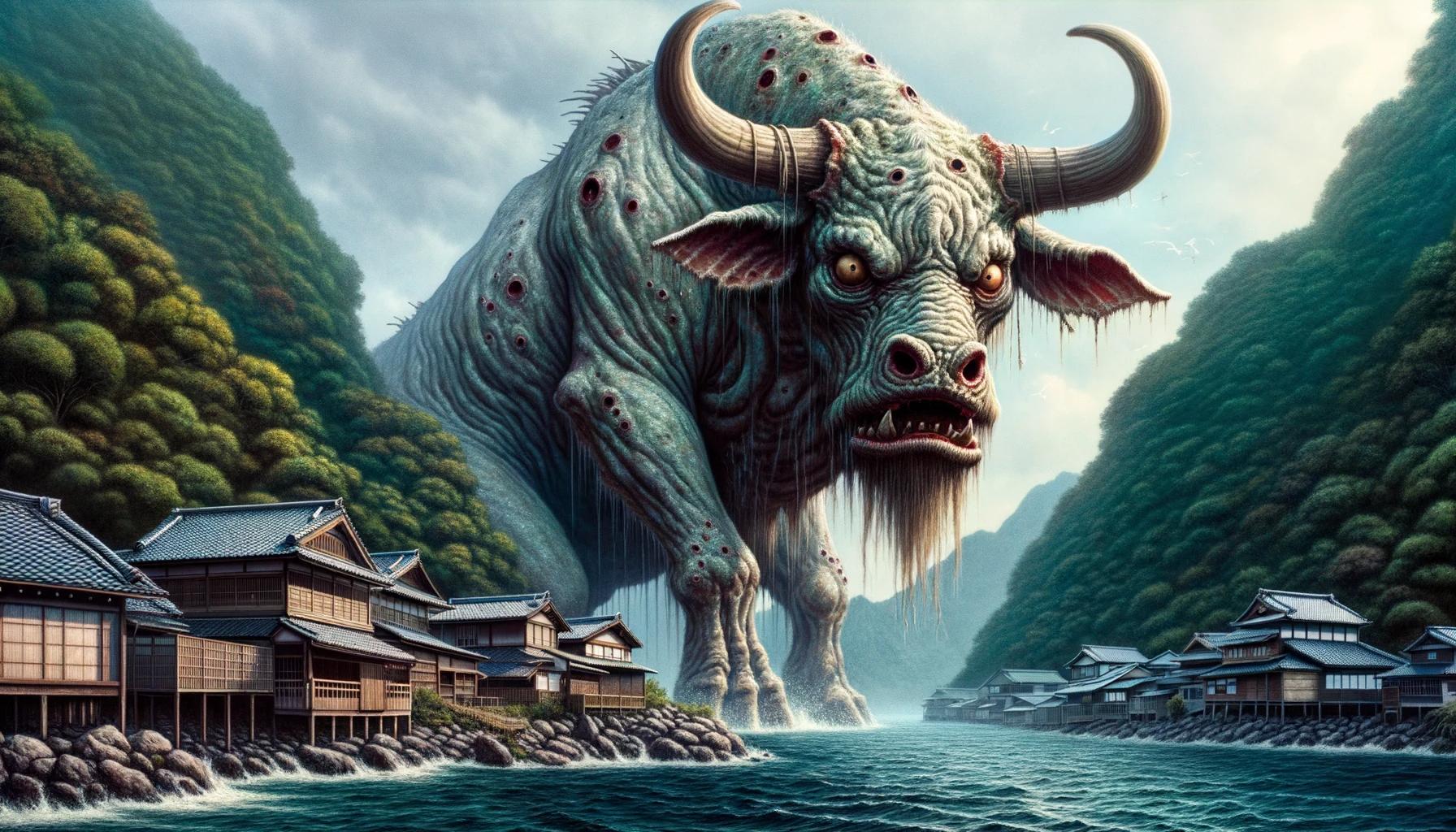
The Ushioni Yokai, a terrifying demon from the western shores of Japan, is an intriguing creature steeped in folklore and myth. Known for its cruel and wild nature, the Ushioni Yokai possesses venomous attributes and feasts on unsuspecting humans.
Often working in tandem with other Yokai, this demon is surrounded by legends and tales that depict its malevolent presence. From curses to encounters with emperors, the Ushioni Yokai holds a significant cultural significance, reflected in its representation in Japanese art and festivals.
Join us as we explore the mysteries and stories surrounding this intriguing creature.
Origins and Folklore
Japanese folklore is rich with mythical creatures that have captivated imaginations for centuries. Among these mysterious beings is the Ushioni Yokai, a demon known for its terrifying presence along the western shores of Japan.
This yokai, with its unique variations and distinctive appearance, has a significant place in the folklore of the country.
Mythical Creatures of Japan
Japan boasts a plethora of mythical creatures, each with its own unique characteristics and stories. From benevolent spirits to mischievous tricksters, these creatures have become an integral part of Japanese culture and folklore.
Among the many forms of yokai, the Ushioni Yokai stands out for its menacing nature and association with water bodies.
Ushioni Yokai: A Demon of the Western Shores
The Ushioni Yokai, translating to “demon of buey” in Japanese, finds its dwelling near the coastal areas and water bodies of western Japan.
Its name is derived from its unique appearance, which typically includes a bovine head and a terrifying demon-like body. However, this yokai comes in various forms, such as a buey-headed oni or a human body donning a kimono.
Variations and Appearance
While the appearance of Ushioni Yokai can vary, they all share common characteristics. These demon-like creatures exhibit extreme cruelty and savagery, with toxic venom coursing through their veins. Some Ushioni Yokai lurk in the vicinity of their lairs, attacking unsuspecting individuals who wander too close, while others patrol the rocky shores and beaches, hunting for their next prey.
Their appearances range from bovine-headed spiders to feline-bodied demons with long, silent tails.
These variations of Ushioni Yokai not only add depth to the folklore but also showcase the diversity of the creatures that inhabit the western regions of Japan.
The different forms and monstrous features evoke a sense of fear and awe in those who have encountered them.
Characteristics and Behavior
The Ushioni Yokai possesses distinct traits and behaviors that contribute to its fearsome reputation. Let’s delve into the essence of this demonic creature and explore its unique characteristics.
Cruelty and Wildness: Traits of Ushioni Yokai
The Ushioni Yokai is renowned for its extreme cruelty and wildness.
It exhibits a merciless nature, inflicting terror wherever it roams. Whether lurking near its lairs or hunting along the coastlines, this creature shows no mercy to its victims.
Venomous and Feeding Habits
One of the most chilling aspects of the Ushioni Yokai is its toxic venom.
Capable of inflicting severe harm, its venomous attacks often leave its prey in excruciating pain or worse. This venom serves as a lethal tool for the Ushioni Yokai in its feeding habits, as it consumes unsuspecting humans, perpetuating the cycle of terror.
Interaction with Humans and Other Yokai
The Ushioni Yokai’s interactions with humans and other yokai are varied yet consistently treacherous. Some Ushioni Yokai lay in wait, ambushing and attacking those who approach their territories. Others actively prowl the shores, seeking out potential prey.
These demonic creatures often collaborate with other yokai, forming alliances to further their malevolent intentions.
- Ushioni Yokai ambush unsuspecting humans near their lairs
- They actively hunt along the coastlines for prey
- Collaboration with other yokai enhances their terrorizing strategies
Through their actions, the Ushioni Yokai reinforces its reputation as a vicious and merciless supernatural being, intertwining the realms of folklore and horror.
Legends and Myths
The Curse of Gokasho Castle: A Tale of Ushioni Yokai
In the region of Mie, a captivating legend speaks of an ominous curse associated with the Ushioni Yokai. It tells the story of a lord from Gokasho Castle who, driven by fear and desperation, took aim at an Ushioni Yokai lurking nearby with his bow and arrow.
Little did he know, this act of aggression would unleash a curse that inflicted an incurable illness upon his beloved wife. As a result, tensions grew between families, leading to the eventual downfall of the lord and the dissolution of his power.
Nishimuro District’s Mysterious Well: Ushioni Yokai or Superstition?
In the remote Nishimuro District, there is a well believed to serve as a gateway connecting the land to the dark depths of the sea. When the waters of this well become polluted, locals attribute it to the malevolent presence of an Ushioni Yokai. Some dismiss it as mere superstition, but others swear that encounters with this creature have led to unexplainable misfortunes.
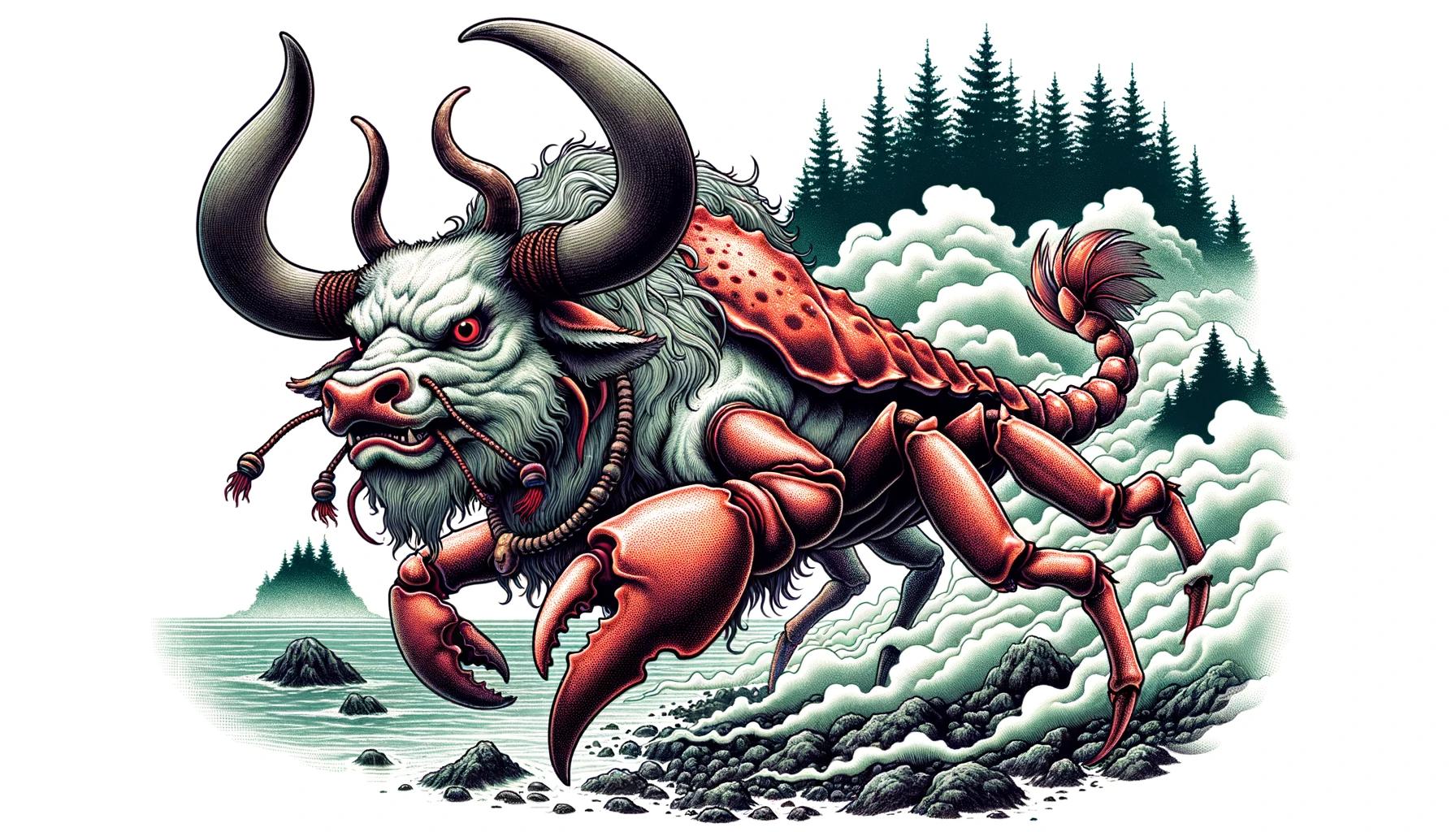
Legends persist, blurring the line between fact and folklore.
Emperor Jingū’s Encounter: Ushioni Yokai Transformation
One tale passed down through generations recounts the extraordinary encounter between Emperor Jingū and a fearsome eight-headed bull-like creature known as Jinrinki. Despite the emperor’s victory over the monster, the defeated Jinrinki transformed into an Ushioni Yokai, unleashing havoc and chaos until it was ultimately subdued by the divine power of Sumiyoshi Sanjin, a trio of Shinto deities.
San’in Region’s Dark Encounters: Ushioni Yokai’s Deceptive Tactics
In the ominous San’in region, the Ushioni Yokai is known for its collaboration with other Yokai, such as the Nure Onna and Iso Onna. Their deceptive tactics pose a threat to unsuspecting travelers.
Tales circulate about a woman, seemingly harmless, who approaches individuals and asks them to hold her baby. However, as soon as they agree, the child inexplicably becomes as heavy as a stone, leaving the victims immobilized and vulnerable to the Ushioni Yokai’s sinister intentions.
Cultural Significance and Representation
The Ushioni Yokai holds great cultural significance in Japan, as evident in its representation in various art forms and its prominence in festivals and traditions. Let’s delve into how this terrifying creature has influenced and captured the imagination of the Japanese people.
Ushioni Yokai in Japanese Art
In Japanese art, the Ushioni Yokai is depicted in various forms, showcasing its monstrous appearance and fearsome attributes. Artists often use intricate details to depict the creature’s head resembling a bellowing ox, accompanied by its demonic body.
These artworks serve as visual representations of the creature’s malevolence, warning viewers of its ominous presence. From traditional paintings to contemporary illustrations, Ushioni Yokai remains a recurrent subject in Japanese artistic expression.
Festivals and Traditions: Honoring Ushioni Yokai
Ushioni Yokai holds a significant place in Japanese folklore, resulting in its inclusion in various festivals and traditions. One such notable event is the Ushioni Yokai Matsuri, where communities come together to celebrate and pay homage to this powerful demon.
Participants adorn traditional costumes, including masks resembling the fearsome Ushioni Yokai, as they partake in processions, dances, and rituals. These festivities serve as a cultural affirmation, preserving and honoring the mythical presence of the Ushioni Yokai in Japanese heritage.
Social Media and Popularity: Ushioni Yokai in the Fan Feed
In the digital age, the Ushioni Yokai continues to captivate audiences across social media platforms. Online communities dedicated to Japanese folklore and Yokai enthusiasts share illustrations, stories, and discussions centered around the Ushioni Yokai. Its popularity extends beyond Japan, with international fans fascinated by its menacing appearance and intriguing legends.
Through the power of social media, the Ushioni Yokai has found a global following, sparking conversations and inspiring creative interpretations.
Frequently Asked Questions about Ushioni Yokai
What is the meaning of ‘Ushi oni’?
‘Ushi oni’ translates to ‘demon of buey’ in Japanese. It refers to the demon-like creature known as the Ushioni Yokai, which is characterized by its appearance as a demonic being with the head of a buey.
Are Ushi oni real creatures or just folklore?
Ushi oni is considered a creature of Japanese folklore and mythology. While there are numerous legends and stories surrounding this entity, there is no scientific evidence supporting its existence as a physical creature in the real world.
It remains a fascinating part of Japanese folklore and cultural imagination.
How does Ushi oni differ from other yokai?
Ushi oni stands out among other yokai due to its unique combination of features. While most yokai have distinct forms and appearances, the Ushi oni varies in its manifestations. It can have the head of a buey with a demon-like body, or a buey head on the body resembling that of a spider, cat, or even a human dressed in a kimono.
What are some popular myths or stories involving Ushi oni?
Ushi oni has intrigued storytellers and myth enthusiasts for centuries. Some famous tales include the curse of Gokasho Castle, where a lord’s encounter with an Ushi oni leads to devastating consequences.
Other stories mention encounters with Ushi oni in wells, waterfalls, or coastal regions, causing illness, curses, and mysterious disappearances.
How is Ushi oni depicted in Japanese art and festivals?
Ushi oni holds a significant place in Japanese art and cultural festivities. It often appears in art forms such as masks, paintings, and sculptures, capturing its terrifying and captivating features. During festivals and rituals, dances and performances are dedicated to honoring the Ushi oni, showcasing its importance in Japanese mythology and culture.
Is there any scientific evidence supporting the existence of Ushi oni?
As a creature of folklore and mythology, there is no scientific evidence to support the physical existence of the Ushi oni. It remains an integral part of Japanese folklore and cultural traditions, captivating the imagination of those intrigued by the supernatural and mythical creatures.
.











